Presbyopia, commonly known as farsightedness, usually becomes noticeable sometime after the age of 40 when reading small print such as menus and text messages becomes more difficult. Because the onset of presbyopia is gradual, individuals tend to adapt and self-correct by holding objects further away until the blurriness begins to greatly impact daily tasks.
Unlike other ocular conditions, leaving presbyopia untreated does not cause more harm to your vision or eye health. Without correction, presbyopia can interfere with day-to-day tasks and have an impact on your life, which is when individuals tend to seek treatment for their condition.
Some telltale signs of presbyopia include:
- Blurriness when reading items 12-18 inches from your face
- Squinting to focus on reading materials
- The need for bright light to read clearly
- Eye strain and headaches after reading
↓ Click Infographic To Enlarge ↓
What Causes Presbyopia?
Between the ages of 40 and 65, most people’s eyes go through a change that leads to presbyopia. In a healthy eye, the cornea and the eye’s lens (the clear disc behind your cornea) work together to focus the light that reflects off of an object so you see the object clearly. The lens contracts and expands thanks to the help of a circular muscle, which in turn allows your eye to adjust for your near and distance vision respectively.
When you develop presbyopia, that lens becomes rigid. This hardening of the lens prohibits the eye from contracting to focus on close-up objects. In the image below, you can see how a healthy eye has the light focused on the retina to produce a clear image thanks to a flexible lens. In an eye with presbyopia, the lens doesn’t contract, so the light is channeled to the focal point behind your retina producing a blurry image.
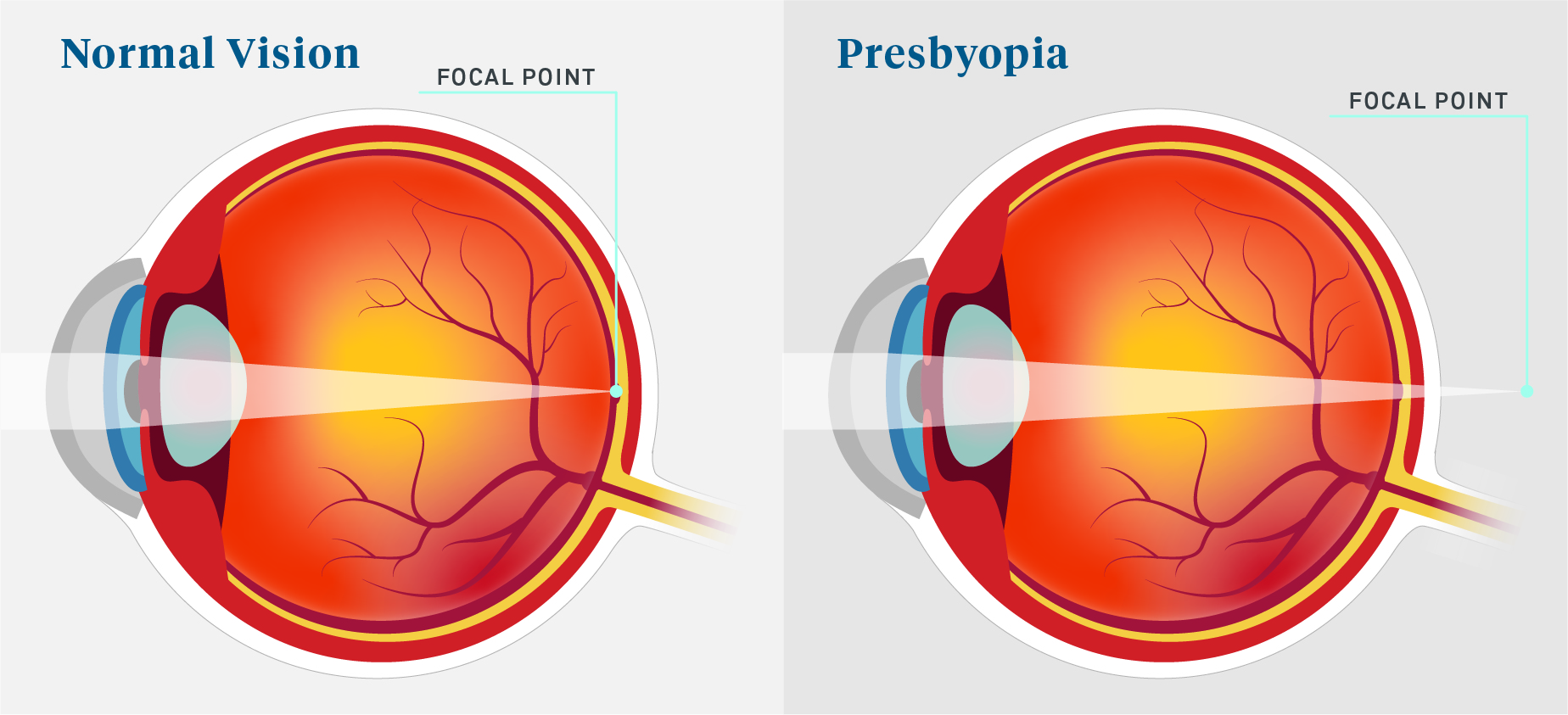
Although this may sound frightening, everyone develops some degree of presbyopia during their life, and a simple visit to your eye doctor for an eye exam can confirm the diagnosis.
Many people associate the need for reading glasses with aging, but don’t let reaching this milestone get you down. There are several easy fixes to correct your reading vision depending on your preferred method of treatment.
If you’ve received a diagnosis of presbyopia and have an eyeglass prescription from your eye care professional, visit our guide on How to Read an Eyeglass Prescription.
Treatment Options
After you’ve received a diagnosis of presbyopia from an eye care professional, you have several options to correct your vision.
Reading Glasses
If you need no other correction or wear contacts that don’t correct for presbyopia, reading glasses can be an affordable option. This is the iconic image people conjure up when they think of this age-related condition.
However, reading glasses aren’t what they used to be! It’s easy to find reading glasses that look like prescription glasses, are fashionable, and are not one-size-fits-all! Nearly 50% of Americans aged 45-64 wear reading glasses to correct presbyopia according to The Vision Council’s June 2018 VisionWatch Report.
Reading glasses can be purchased through your optometrist if you have a different reading power in each eye, or need a very weak or strong reading power. Reading glasses purchased from an eye care office tend to be significantly more expensive than over-the-counter reading glasses found at Readers.com®, drug stores, dollar stores, or in value packs. Need help determining your reading glasses power? Try our Power Finder guide.
Prescription Glasses
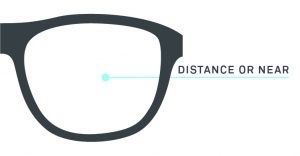 Single Vision
Single Vision
Single vision lenses have one prescription throughout the entire lens that corrects for myopia (nearsightedness) or presbyopia (farsightedness). This type of lens is the most common and is also the traditional lens found in prescription or over-the-counter reading glasses.
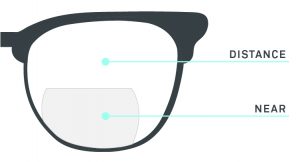
Bifocal
Prescription bifocal glasses can correct for nearsightedness and farsightedness within the same lens. The top of the lens has the correction for distance vision, and the lower portion has the correction for close-up vision. Bifocal lenses have a visible line dividing the bifocal area from the rest of the lens.
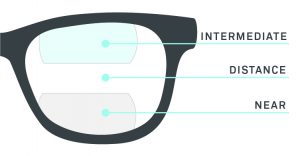
Trifocal
Similar to a bifocal, a trifocal lens has three focal points and corrections throughout the lens: distance, intermediate, and close-up. Visible lines do appear between the viewing areas.
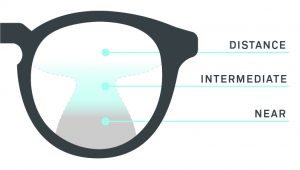
Progressive
Progressive lenses have three viewing areas, similar to a trifocal. However, progressive lenses have no lines because the power gradually, or progressively, changes throughout the lens. These lenses also eliminate some of the issues bifocal and trifocal wearers experience due to the abrupt power changes and visible lines in the lens.
Surgery
For those who aren’t interested in wearing glasses, surgical options are available to correct presbyopia for qualified candidates.
A somewhat new technique, a corneal inlay can be performed to correct presbyopia. This short procedure inserts a lens into the cornea of one eye to improve near vision. Corneal inlays can be removed or even replaced if vision post-procedure needs to be adjusted.
Another surgical route involves a refractive surgery like LASIK to help correct your vision by creating monovision. These procedures will reshape the cornea to create close-up vision in one eye, and distance vision in the other. Before performing a procedure like this, your eye doctor may recommend trying monovision contact lenses to ensure monovision is right for you.
*Please consult your eye doctor before making a decision about your eye health. The information provided is not a substitute for medical advice and should not be used for medical diagnosis or treatment. See our full disclaimer.

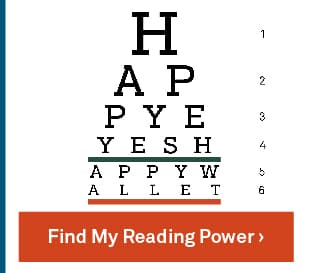


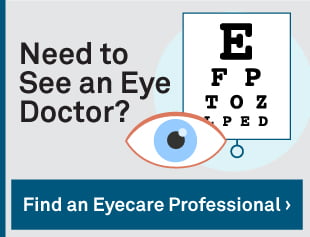
0 Comments